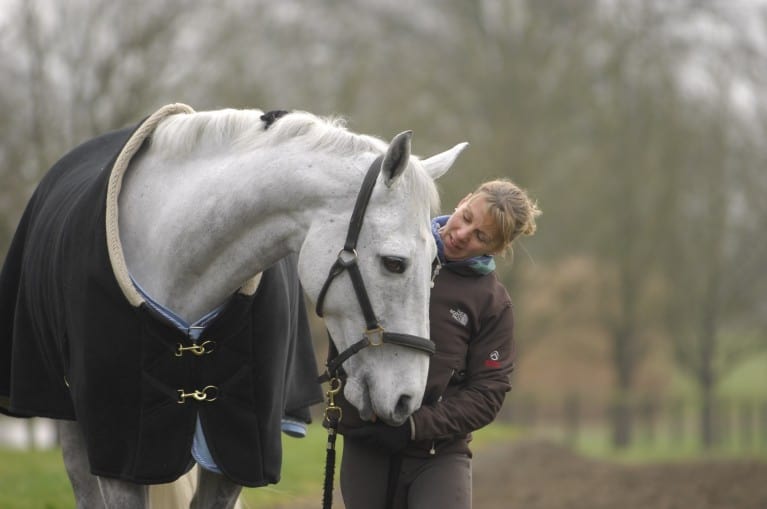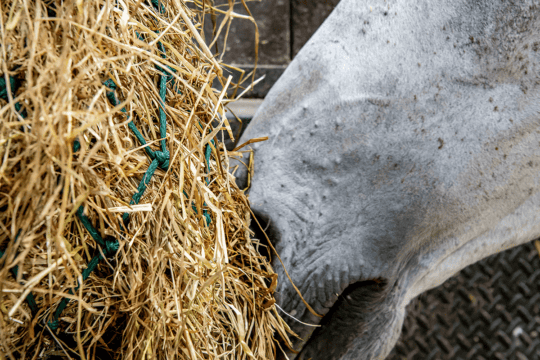Do you know how to tell if your horse is feeling under the weather? These ten signs can give you a pretty good idea.

1. Temperature, pulse and respiration.
It’s essential to know your horse’s vital signs and TPR is a good place to start. Your horse’s normal temperature is 37.2-38.3°C. To take his temperature, use a digital thermometer inserted into his rectum.
Your horse’s normal heart rate is 28-44 beats per minute. Use a stethoscope to listen just behind his elbow, by the girth area.
A normal respiratory rate for an adult horse is 10-24 breaths per minute. You can measure this by watching his flank move as he breathes, watching his nostrils, feeling his breaths by holding a hand in front of his nostrils or listening to the air traveling across his trachea (on the bottom of his neck) with a stethoscope.
2. Salmon pink gums
Your horse’s gums should be moist and salmon pink. If they are pale, deep red, purple, overly yellow or streaked with the appearance of small, broken blood vessels, it’s time to call the vet.
3. Capillary refill time
When you gently press your horse’s gums, they should turn white, but return to their salmon pink colour within two seconds.
4. How does your horse’s gut sound?
Gurgling, tinkling sounds and the occasional roar are all normal – but beware if you can’t hear any, especially if coupled with behavioural signs of colic.
5. Hydration
You can check your horse’s hydration status by pinching the skin on the base of his neck or shoulder and releasing it. It should snap back to normal within one or two seconds.
6. Bright eyes
Your horse’s eyes should be clear, bright and free from discharge.
7. Decent droppings
Droppings may be an indication of his health. They should be well-formed balls without any massive chunks of undigested feed, have a subtle odour, a fairly uniform colour and no mucous covering.
8. Check his legs
Do you know what’s normal when you feel your horse’s legs? Some horses may have ‘cold’ splints – bumps along his lower leg that don’t affect his wellbeing. Any old injuries may make his legs feel different, even if they’re completely healed. Every horse is an individual and by having a good feel of his legs daily, you’ll get to know what’s normal and when things aren’t.
9. No foot, no horse
How are your horse’s feet looking? Are they dry, brittle and cracked? Can you tell if he’s due for shoeing? Many problems can occur with the feet, so it’s worth having a chat with your farrier to determine what’s normal for your horse.
10. Good condition?
Your horse’s overall condition can indicate whether he’s feeling good – or not. Learn how to body condition score your horse and assess his weight.








